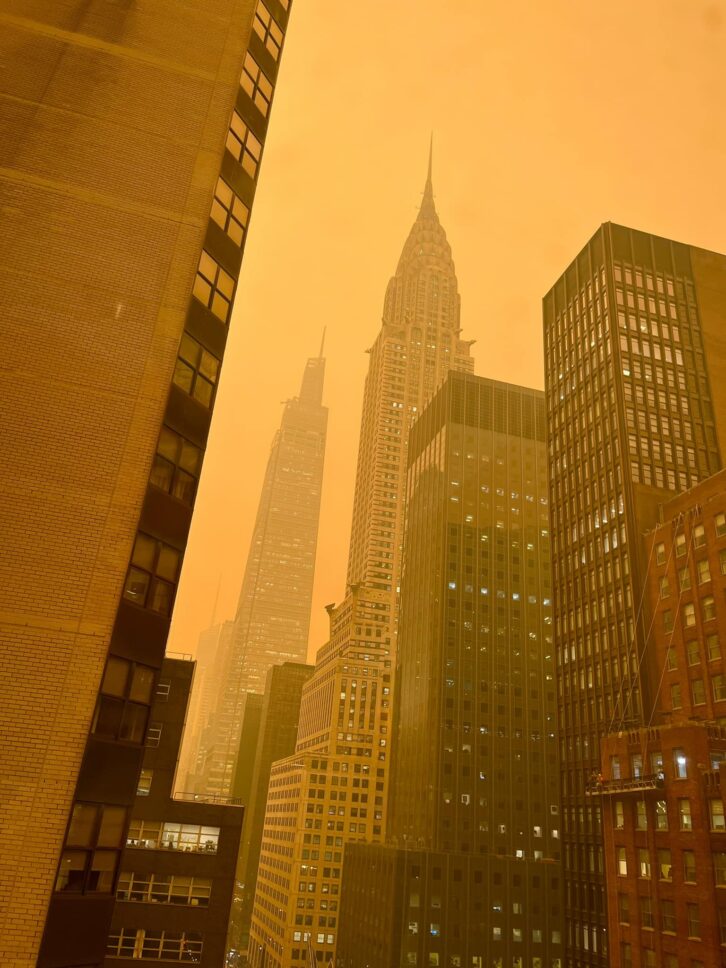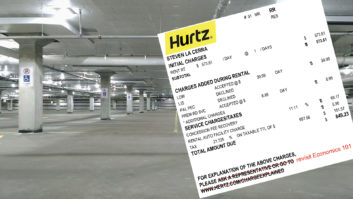
When concerts came back after a mandatory pandemic time-out, it was barely a surprise that 2022 became a record-breaker, with the top 100 tours worldwide raking in $6.28 billion according to Pollstar. The big question was, without the novelty factor of seeing live music again, could 2023 ever hope to measure up? With the summer concert season now upon us, we already know the answer: Yes.
It’s safe to say there’s never quite been anything like the season we’re witnessing this year. To its credit, the live sound industry is helping meet the unprecedented demand for live entertainment—and it has to: Audiences are packing venues of every size, from your local underground hip-hop show to the mega-stadium down the block.
You know it’s a big year when tours are making headlines outside of the entertainment section of your local paper. When Taylor Swift’s Eras stadium tour hits your area, keep an eye out for the inevitable article on its local economic impact—hotels, restaurants, hairdressers and more are all getting their ancillary piece of the pie. Research consultancy QuestionPro estimates the average Swiftie is spending $1,300 in relation to the tour (though I can attest that they’re definitely looking to save a few bucks; if I had a dollar for everyone who’s asked ‘Could you get me into the Taylor tour?’, I could probably buy a ticket myself).
Clearly, there are few things that can stop the momentum of the concert industry right now—but one of them is the environment.
As I write this, dense, hazardous smoke from 400 Canadian wildfires has been blanketing the east coast for days, making everyone here in New York look at Canada like it’s the guy who burned popcorn in the office microwave. It has eased up enough that major shows like Ed Sheeran’s two-night stand at New Jersey’s MetLife Stadium still hosted more than 175,000 people this past weekend, but there were plenty of canceled concerts, with acts like Chris Stapleton and Taj Mahal sidelined by the smoke.
The blame for those wildfires has been placed squarely at the feet of climate change, and we’re probably going to see more environmental factors affect the concert industry in the years to come. However, we can also do something about it; we can’t control the weather, but we can change the role that concerts play in the ongoing climate change crisis, better mitigating the inadvertent damage that shows cause.
We’ve reacted incisively to environmental problems before. Back in 2011, there was a string of weather-related concert disasters, including the tragic Indiana State Fair stage collapse that killed seven and injured 58 people. The tour industry reacted quickly and responsibly, founding the Event Safety Alliance to develop standards and training that changed how it handled safety issues at large events, including weather-related problems. While there have been many environmental groups and policies involved in touring over the years, as the climate crisis continues to worsen and affect the bottom line, those efforts need to get similarly more coordinated.
Blog: Moon-ing Over Pink Floyd in Dolby Atmos
For decades, many tours have provided a platform for environmental groups to raise awareness among concertgoers. It’s useful to educate fans that the longer you use something, the more you reduce its carbon footprint, but increasingly tours have bigger aspirations. For nearly 20 years, the nonprofit Reverb has helped artists like Billie Eilish, the Dave Matthews Band, Paramore and others reduce their tours’ carbon emissions while elevating their waste reduction and diversion, sometimes by truly staggering amounts.
Now Coldplay has released stats developed by MIT that find the band’s current world stadium tour has so far produced 47% less CO2e emissions than its previous one in 2016-17 and diverted 66% of its tour waste from landfills—and that’s just the tip of the (melting) iceberg. Using kinetic dance floors and stationary bikes, audiences have generated 15kWh of power per show—enough to run the band’s C-stage performance every night and provide the crew with phone and laptop charging stations. The list of impressive stats goes on (funding 5m new tree plantings, for instance) and can be found on the band’s website. Clearly, if a stadium concert can have a massive economic impact on the surrounding area, harnessing the mass collaborative power of those assembled fans can have an environmental impact, too.
Of course, right now, those kinds of initiatives are only within reach of acts that can fill at least an amphitheater. The technology behind those efforts has to become more accessible and financially realistic for smaller productions in order to have an industry-wide effect. It’s going to be a long time before scrappy hardcore bands playing storefront venues on their first tour can harness the power of a mosh pit with a kinetic dance floor. Until then, however, they can take comfort knowing that their ancient Econoline van may be broken down on the side of the turnpike, but it has a smaller carbon footprint than that sparkling new Prevost tour bus that just passed them on its way to a stadium.







